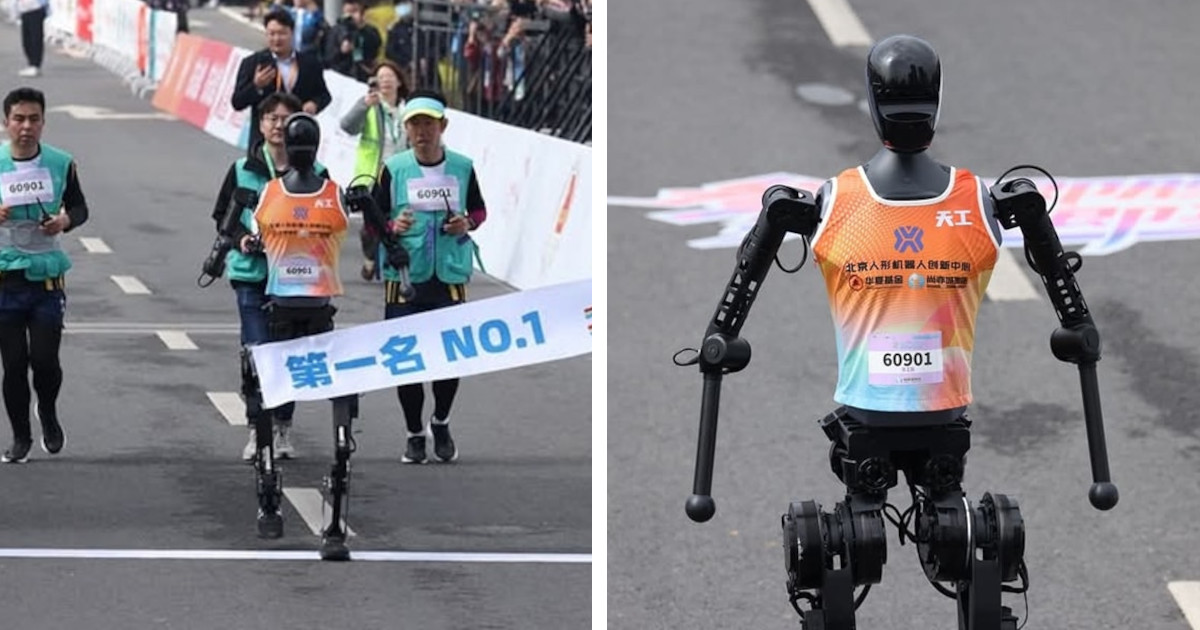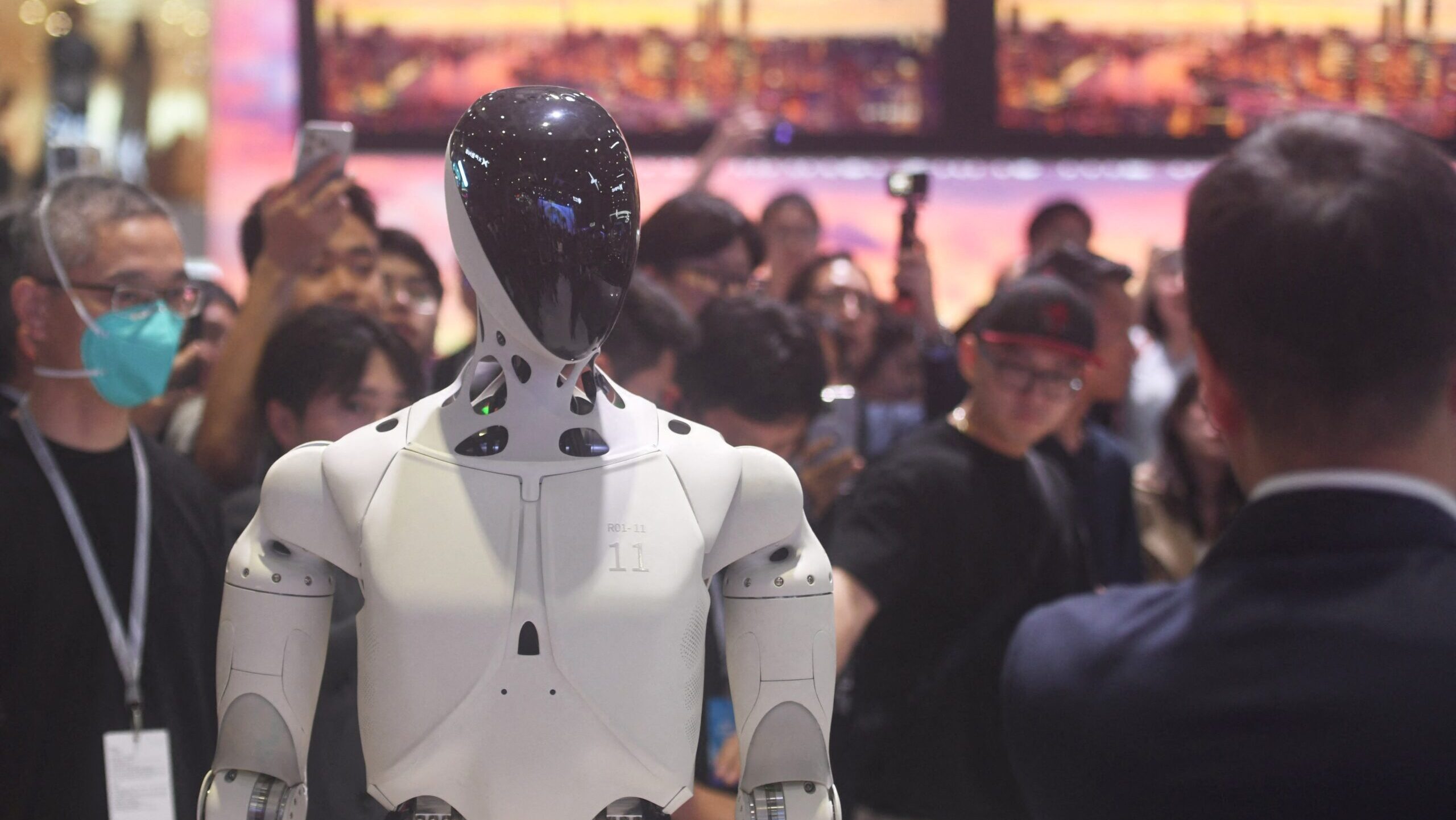The Rise of the Robots: China’s Manufacturing Revolution and the Crucial Role of Robotics Repair
China’s ambition is undeniable. A relentless pursuit of technological leadership is reshaping its economy, fueled by a strategic focus on "new quality productive forces." At the heart of this transformation lies robotics, particularly the burgeoning fields of humanoid and smart service robots. These aren’t futuristic fantasies anymore; they’re actively deployed now, injecting speed, precision, and efficiency into key sectors, most notably the electric vehicle (EV) industry. As China races to secure a competitive edge, the reliability and longevity of this burgeoning robotic workforce become paramount. Which brings us to a critical, often overlooked, aspect of this robotic revolution: repair and maintenance. Enter Fix4Bot.com – a dedicated platform poised to become the backbone of China’s robotic infrastructure.
The Chinese Robotics Boom: A Landscape of Innovation
The scale of China’s robotic investment is staggering. Government initiatives, generous subsidies, and a relentless entrepreneurial spirit are converging to create an unprecedented boom. While state-owned enterprises have historically dominated manufacturing, the driving force behind the current robotic wave is increasingly private companies – agile, innovative firms like UBTech Robotics, a key player highlighted in recent industry discussions.
UBTech Robotics’ Chief Brand Officer, Michael Tam, speaks to the reality already unfolding: “The manufacturing sector has already been integrating humanoid robots, AI, and digitalization into high-end production scenarios.” This isn’t simply about replacing human workers; it’s about creating symbiotic relationships where robots perform repetitive, dangerous, or demanding tasks, freeing human workers to focus on higher-level strategic roles and innovation. The EV industry, experiencing explosive growth, is a prime example. Robots are involved in everything from precision assembly of battery packs to quality control and logistics within factories.
Tam’s anticipation of “more breakthroughs in 2025” underscores the rapidly accelerating pace of development. These breakthroughs are expected to arise from the increasingly tight integration of robotics and Artificial Intelligence. Combined, these technologies promise to unlock unprecedented levels of automation, adaptability, and intelligence in manufacturing processes. Imagine robots capable of learning on the job, adapting to changing production requirements, and even proactively predicting and mitigating potential issues. This vision isn’t decades away; it’s rapidly approaching.
The Achilles Heel: Robot Downtime and the Need for Expertise
However, with this ambitious expansion comes a significant challenge: reliable and immediate repair services. Robots, complex machines comprised of intricate mechanical, electrical, and software components, are susceptible to a wide range of issues. Accidents happen, parts fail, software glitches occur, and unexpected environmental factors can impact performance. The cost of downtime in an advanced manufacturing environment is astronomical. Every hour a robot is offline represents lost productivity, missed deadlines, and ultimately, hindered profitability.
Historically, robot repair has been a fragmented market, often reliant on infrequent visits from specialist technicians or expensive, slow-turnaround contracts with original equipment manufacturers (OEMs). This system is demonstrably inadequate for a rapidly expanding industry demanding increasingly sophisticated robotic solutions. The problem is compounded by several factors:
- Skill Shortage: The complexity of modern robots requires highly specialized technicians proficient in robotics, mechatronics, AI, and software programming. Finding and retaining these skilled professionals is a major bottleneck.
- Geographic Inequities: Expertise is often concentrated in major urban centers, leaving manufacturers in smaller cities and rural areas underserved.
- Supply Chain Vulnerabilities: Sourcing replacement parts, particularly for specialized robots or older models, can be a lengthy and costly process.
- Proprietary Systems: OEMs often maintain tight control over their technology, making independent repair difficult and limiting options for manufacturers.
Fix4Bot.com: A Solution for a Growing Need
Fix4Bot.com addresses these challenges head-on, establishing a centralized platform designed to connect manufacturers with a network of vetted and highly skilled robotics repair professionals. The platform is more than just a directory; it’s a sophisticated ecosystem designed to expedite the repair process, minimize downtime, and optimize maintenance schedules. Here’s a breakdown of how Fix4Bot.com is poised to revolutionize robotics repair in China:
1. Comprehensive Network of Verified Technicians:
Fix4Bot.com meticulously vets its registered technicians. This isn’t a "post-and-pray" marketplace. The vetting process includes:
- Certification Verification: Confirming valid certifications from recognized robotics training institutes and industry bodies.
- Background Checks: Ensuring technicians have a clean professional record and relevant experience.
- Skill Assessments: Evaluating technical proficiency through practical assessments and knowledge quizzes covering various robot brands, models, and repair techniques.
- Client Reviews and Ratings: Establishing a transparent feedback system to incentivize quality workmanship and accountability.
2. Advanced Diagnostic Tools & Remote Support:
Beyond simply connecting manufacturers with technicians, Fix4Bot.com leverages digital tools to streamline the diagnostic process.
- AI-Powered Diagnostic Assistance: The platform incorporates an AI assistant that can guide manufacturers through initial troubleshooting steps, based on error codes, observed symptoms, and robot model information.
- Remote Diagnostics Capabilities: Fix4Bot.com facilitates secure remote access to robots (with appropriate permissions) allowing experienced technicians to diagnose problems remotely, minimizing unnecessary on-site visits. This is particularly valuable for manufacturers in geographically remote locations.
- Digital Repair Manuals & Troubleshooting Guides: A comprehensive library of repair manuals, troubleshooting guides, and video tutorials for a wide range of robot models.
3. Parts Sourcing & Logistics Optimization:
A key bottleneck in robot repair is the availability of spare parts. Fix4Bot.com integrates with a network of verified parts suppliers to streamline the procurement process.
- Parts Inventory Database: A searchable database of available parts from multiple suppliers, allowing manufacturers to quickly find and compare pricing.
- Automated Parts Ordering: Simplified ordering process with integrated payment and tracking capabilities.
- Logistics Management: Partnering with reputable logistics providers to ensure prompt and reliable delivery of parts, minimizing downtime.
- Proactive Parts Management: Provides analytics and forecasting to help companies optimize their spare parts inventory, reducing both costs and downtime.
4. Preventative Maintenance Scheduling & Remote Monitoring:
Fix4Bot.com isn’t just about reactive repairs; it’s about proactive maintenance.
- Customized Maintenance Schedules: The platform allows manufacturers to create customized maintenance schedules based on robot usage, operating environment, and manufacturer recommendations.
- Remote Monitoring & Predictive Maintenance: Integrating with robot data streams (with manufacturer consent) to monitor performance metrics and identify potential issues before they lead to breakdowns. This “predictive maintenance” capability is a game-changer, shifting from reactive repair to proactive intervention.
- Automated Alerts & Notifications: Sending automated alerts and notifications when maintenance is due or when abnormal operating conditions are detected.
5. Data-Driven Insights & Performance Analytics:
Fix4Bot.com’s platform generates valuable data that can be used to optimize robotic operations.
- Downtime Tracking & Analysis: Detailed reports on robot downtime, categorized by fault type, repair time, and cost.
- Maintenance Cost Optimization: Identifying areas where maintenance costs can be reduced through improved preventative maintenance strategies or equipment upgrades.
- Technician Performance Evaluation: Tracking technician response times, repair quality, and client satisfaction to identify top performers and areas for improvement.
Impact on China’s Manufacturing Landscape
The impact of a platform like Fix4Bot.com on China’s robotics-driven manufacturing revolution could be transformative.
- Increased Productivity: Minimizing robot downtime directly translates to increased output and improved overall factory productivity.
- Reduced Costs: Streamlined repair processes, optimized parts sourcing, and proactive maintenance can significantly reduce maintenance costs.
- Enhanced Competitiveness: Faster response times, improved reliability, and optimized maintenance strategies give Chinese manufacturers a competitive edge in the global market.
- Job Creation: While robotics may automate certain tasks, the demand for skilled robotics technicians is also growing rapidly. Fix4Bot.com can play a role in connecting training programs with employers and facilitating career advancement for technicians.
- Support for SMEs: Provides accessibility to robot maintenance services for smaller and medium-sized enterprises (SMEs) who might not have the resources to establish in-house robot maintenance teams.
Looking Ahead: The Future of Robotics Repair
Fix4Bot.com is not simply a reactive repair service; it represents a shift towards a more holistic and proactive approach to managing robotic assets. As robots become increasingly sophisticated and integral to manufacturing processes, platforms like Fix4Bot.com will become indispensable. The future of robotics repair will likely involve:
- Increased Adoption of AI & Machine Learning: Utilizing AI to further enhance diagnostic capabilities, predict failures with greater accuracy, and personalize maintenance schedules.
- Augmented Reality (AR) for Remote Assistance: Technicians using AR headsets to provide step-by-step guidance to on-site personnel, further reducing the need for on-site visits.
- Blockchain for Parts Traceability: Implementing blockchain technology to enhance traceability and authenticity of robot parts, combating counterfeit components.
- Integration with Industrial IoT (IIoT) Platforms: Seamless integration with existing factory automation systems to provide a comprehensive view of robot health and performance.
China’s robotics revolution is underway, and the success of this transformation hinges not only on innovation but also on the ability to ensure the long-term reliability and performance of the robotic workforce. Fix4Bot.com, by providing a robust and accessible platform for robotics repair and maintenance, is poised to play a pivotal role in realizing China’s ambitious manufacturing goals.











👍👍👍
Should it be Next "Level" ? rather than "Leve"?
Dhaauogg
Is carelessly passionlessly assembled ,badly developed frame n bone ,,
Good afternoon Mr Guan ♥️🇨🇳🕋🌏🌠🦾😇👋
China's humanoid robots are advancing rapidly, with companies like Unitree Robotics leading the way.
Unitree's G1 humanoid robot has been showcased for its agility and ability to perform tasks with precision, even surpassing human balance in experimental settings.
Additionally, Chinese companies are mass-producing these robots at a lower cost compared to Western counterparts.
Chinese robotics firms are also focusing on developing humanoid robots for various applications, including industrial inspections, disaster rescue, and consumer markets.
China has set goals to have two to three global leaders in humanoid robotics by 2025, reflecting the country's commitment to this technology.
Chinese companies like MagicLab have introduced advanced robotic hands capable of handling complex tasks with a payload capacity of up to 11 pounds (5 kilograms) and the ability to carry over 44 pounds (20 kilograms) in work environments.
These advancements highlight China's growing dominance in the humanoid robotics sector, driven by a focus on supply chain self-sufficiency and technological innovation.
Can nobody spell these days?
Are Chinese leaders planning what to do with workers replaced by robots? Also, what ultimately, drives this intense interest in robotics?
I am Subrata Deb, from Kolkata, India
Why no HD quality video ?
❤❤❤❤❤ very good
🇨🇳 robot can jump, run,danse, 🇺🇲 Boston like walking dead,,
🇮🇳 modi is the robot ,philipine there's mouth is robot
Very good
Wonderful video. Dear Admin can you encourage the companies in China to increase the humanoids numbers in hospitality and warehouses. Kind regards
Joke, nothing new, everyone doing the same….lol
I love CGTN, I am a subscriber
I have predicted a "ChatGPT moment" in robotics this year! Because Unitree already has amazing robots, and Chinese tech giants like Xiamo and BYD are developing humanoid robots.
I wonder if these are original Nike made in China or Chinese made in… China 🤔😅😉🙃😋
1 airline China?